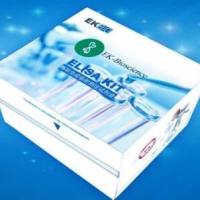Determination of Membrane Topology of Glutamate Receptors
互联网
707
Glutamate receptors are large integral membrane proteins that belong to the class of ligand-gated ion channels. They constitute a family of receptors that are activated by binding of the neurotransmitter l -glutamate. Functional receptors are formed by assembly of several subunits around a central ion-conducting pore. Each subunit is thought to contain multiple membrane-spanning domains. A reliable membrane topology model, which defines the number of transmembrane segments and their orientation, is critical for understanding the relationship between the structure of these receptors and their function. This chapter describes some of the technical considerations of an approach that we and others have used to determine experimentally aspects of the membrane topology of ionotropic glutamate receptors (1 –7 ). This strategy uses the fact that glycosylation of asparagine residues only occurs in extracellular domains, owing to the fact that the glycosyl transferases are localized to the lumen of the endoplasmatic reticulum. Demonstration of functional N -linked glycosylation therefore provides a definitive measure of extracellular localization. Alternative approaches that do not rely on alteration of N -glycosylation status have also provided information on membrane topology of glutamate receptors (7 –9 ), but a detailed discussion of these methods is outside the scope of this chapter.









